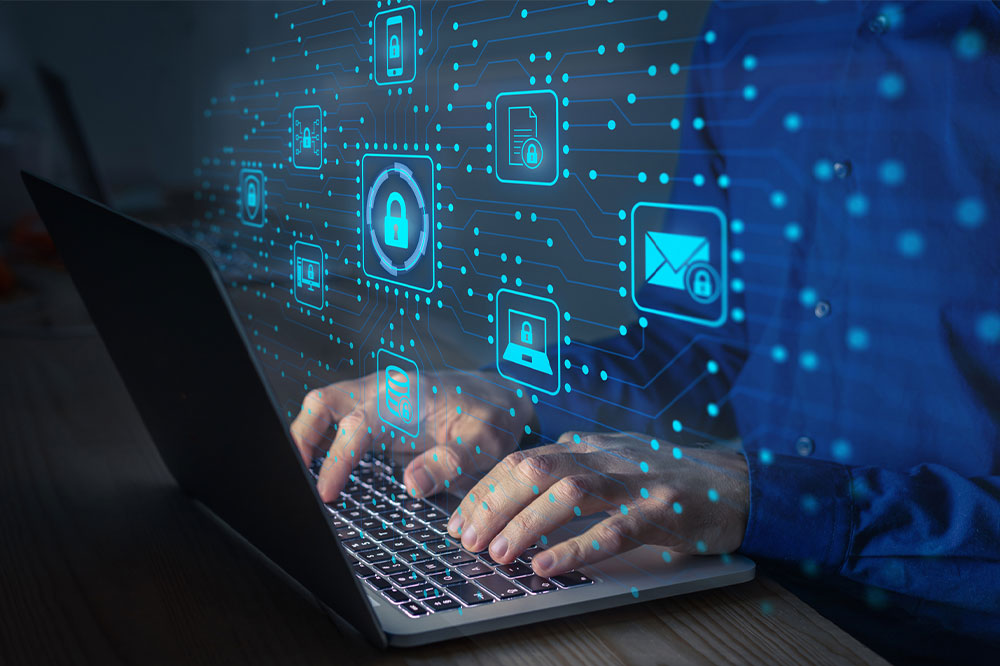Cyberattack Prevention – Key Steps and Top Errors

In the digital era, cyberattacks have become a growing threat to user privacy and personal data. As these attacks can take many forms, developing and building a sturdy security solution becomes essential. Identifying threats and preventing attacks is crucial for avoiding data breaches. You can also find affordable and efficient ways to protect your data and digital systems. Here are a few ways to ensure cybersecurity and mistakes to avoid when using the internet.
Ways to prevent cyberattacks
Setting strong passwords
Unauthorized usage of devices can be prevented by setting a strong password. Using different usernames and passwords for each platform or account is a good practice, as this ensures that even when someone tries to hack one account, you won’t lose all your data. Also, changing the passwords frequently ensures high protection. You should always switch on password protection while accessing sensitive information.
Ensuring Wi-Fi security
Today, everyone uses Wi-Fi on multiple devices, which makes them vulnerable to cyberattacks. When an electronic gadget connected to the home network falls prey to an attack, other devices become vulnerable to the threat as well. So, you should change the default network password, which the attackers would be able to decipher. Various encryption protocols can also be used to ensure Wi-Fi security.
Constantly backing up data
When a system is infected by a virus, personal data may be exploited or deleted, and you may be unable to access it. So, always keep a backup of important data. Also, it is best to ensure the external backup device is not connected to the system you regularly use. Maintaining a copy of your data lets you have access to files and documents you need, helping avoid serious consequences like data loss or theft.
Utilizing the firewall
A firewall is an efficient way to protect data from malicious cyberattacks. A practical and robust firewall can prevent unauthorized access to the network and connected devices. It helps set up a barrier between trusted and malicious networks, providing additional defense against malware and viruses. The firewall will not allow any suspicious stuff to enter your system.
Updating software
Regularly updating your software can strengthen cyber security and digital safety. If the system or the software is not updated regularly, it can weaken the devices in a network. Software updates keep making the system more robust and resilient to attacks. This weakness is utilized by hackers to gain access to the system. So, periodically maintaining and keeping up with software updates is a must to avoid cyberattacks.
Using multi-factor authentication
Multi-factor authentication, or MFA, helps protect the systems better than passwords. Two or more factors are needed to access the account and verify the user’s identity when using the MFA system. The likelihood of unauthorized access is also lowered as the MFA makes sure that the system is being used by the real user.
Controlling access
Maintaining and controlling system access can help avoid cyber attacks. Keeping an eye on your account activity and avoiding sharing access with strangers are crucial steps. You can lock your system using a strong password and give the details only to those you trust.
Mistakes to avoid when using the internet
Some mistakes that you make while surfing the internet can expose your data to all kinds of risks and also make your system vulnerable to spyware or malware attacks. Here are a few lapses to avoid:
Ignoring browser updates
You should not ignore update prompts and requests. Updates are released to make the browser stronger and more efficient. Through updates, developers offer strengthened security advantages to the user. This enables safe internet browsing and prevents hacking attempts. So, take a few minutes to update the browser.
Accepting cookies from all sites
Cookies are files generated by the website you visit. They are created to provide an easy online experience by keeping you signed in and remembering your site preferences. These usually harmless files can be used by hackers to track your browsing habits. So never allow third-party cookies set by sites other than the trusted ones you are visiting.
Clicking on random links
Hackers usually create tempting ads on websites and in emails, announcing giveaways or discount sales to grab your attention. When you click the link, the fraudsters get access to infiltrate your system and steal data. So, be wary of such attacks when you receive emails from strangers or see any suspicious advertisements
Sharing credit card details on unfamiliar websites
Shopping from unfamiliar sites can increase the risk of theft, wherein fraudsters can use your credit card information to access your account. So, visit only from reliable shopping sites or those that have a green padlock and “https”.
Saving bank details on websites
Some websites may ask to save your account details. Don’t give them access to such sensitive details, as there are chances of the information being exploited by attackers.
Cyberattacks can take many forms, such as phishing, password attacks, malware, SQL injection attack, and zero-day exploit. So, a safe system and experienced user should be able to ward off all kinds of threats. For small and large organizations, installing a centralized protection system is highly beneficial in preventing such malicious attacks. Cybersecurity technology companies like CrowdStrike provide endpoint cybersecurity software to protect the endpoints (physical devices) such as laptops, mobiles, and desktops connected to the corporate network. CrowdStrike offers four endpoint protection plans: Falcon Go, Falcon Pro, Falcon Elite, and Falcon Complete. Each comes at a different price point for the specific features. You can choose the plan that meets your business needs. CrowdStrike also provides several other services like incident response, technical assessment, and advisory services to help a company prepare against cyberattacks. It also offers solutions to prevent data breaches and ransomware.